
MONOPIGMENT AND COMPOUND
Monopigment colours have always been appreciated by artists for the predictability and purity of the shades obtained from them when mixing: the less pigments participate in the production of the mixture, the cleaner the final tint...Read more >>>
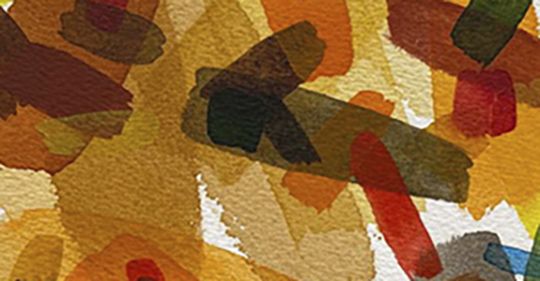
TRANSPARENT, SEMI-TRANSPARENT, OPAQUE PAINTS
Glazing is a multi-layered technique in painting: applying paint with transparent strokes from lighter to darker, one layer over the other.Alla prima is a technique in which a picture... Read more >>>
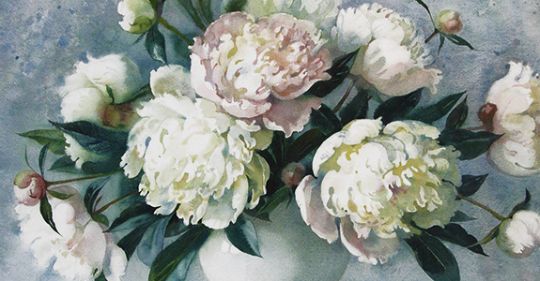
WATERCOLOUR TECHNIQUES
Glazing is a multi-layered technique in painting: applying paint with transparent strokes from lighter to darker, one layer over the other.Alla prima is a technique in which a picture is created within one painting session before the colours dry completely.
Read more >>>
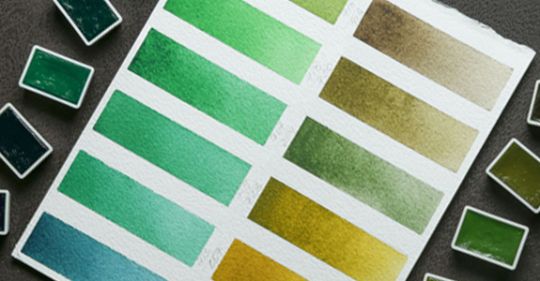
COLOUR COLLECTIONS & MIXING COLOURS
In the palette of ochres and browns there are natural eaths (monopigment colours), iron oxides transparent and opaque (monopigment) and compound colours, in which, as a rule, iron oxide or some yellow and/or red...
Read more >>>
TRANSPARENT, SEMI-TRANSPARENT, OPAQUE PAINTS. MIXING FEATURES.
TRANSPARENT AND SEMI-TRANSPARENT PAINTS.
By the degree of transparency, paints are divided into:
Transparent glazing paints (T – transparent) or semi-transparent (ST – semi-transparent). Transparent paints are easily mixed and spread over the paper without sediment. In multilayer painting, layers of transparent paints work on the lumen. Light penetrates through their thickness and is then reflected from the paper. Transparent paints made on synthetic organic pigments are difficult to wash off or are washing-resistant at all, leaving a colour mark on the paper. Semi-transparent (ST – semi-transparent) have the properties of transparent in thin layers and covering properties of high-hiding paints with thick application. Semit-ransparent paints are better washed off than glazing paints, or are washed off completely.
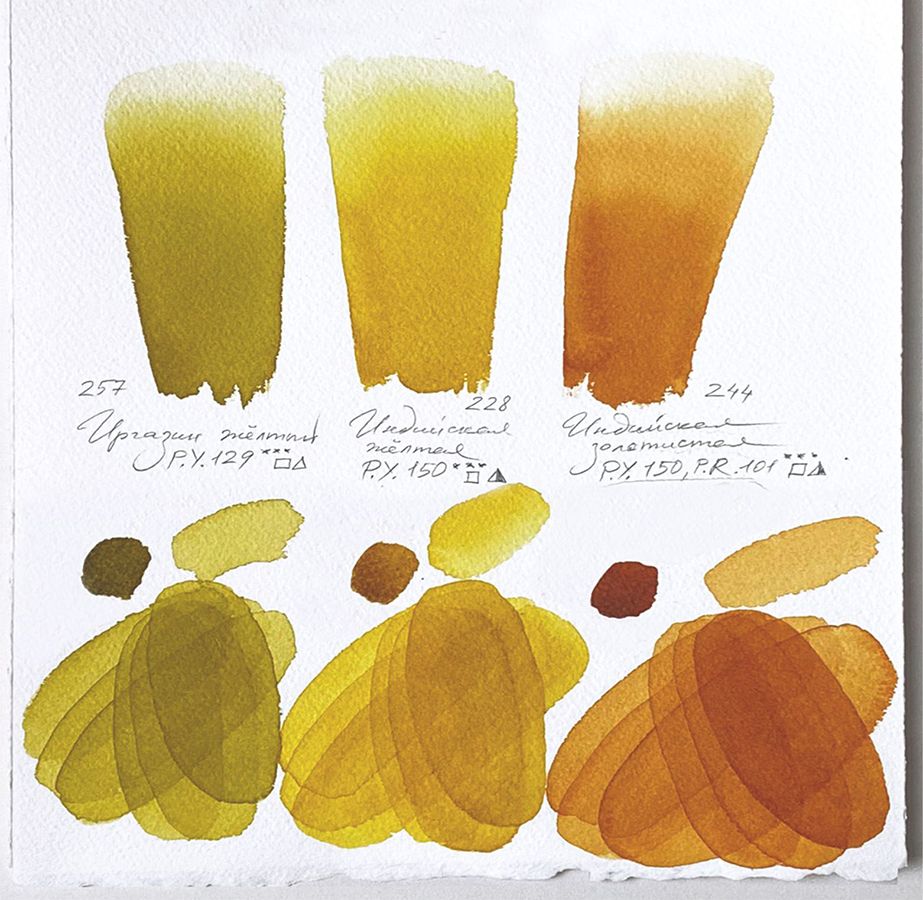
Transparent colours: Yellow (211), Lemon (214), Aureolin (253), Indian yellow (228), Indian gold (244), Golden (216), Golden deep (217), Titian red (226), Venetian red (357), Scarlet (318), Ruby (323), Carmine (319), Quinacridone red (361), Madder lake red light (313), Claret (325), Quinacridone rose (324), Quinacridone violet rose (622), Quinacridone lilac (609), Quinacridone violet (621), Perylene violet (627), Violet (607), Dioxazine Violet (628), Azure blue (519), Bright blue (509), Azure (513), Prussian blue (518), Blue (515), Ultramarine deep (521), Blue lake (510), Indanthrene blue light (537), Turquoise blue (507), Emerald green (713), Green light (717), Green original (719), May green (745), Yellow-green (718), Sap green (716), Irgazin yellow (257), Green (725), Van Dyke brown (401), Mars brown (412).
Semi-transparent colours: Zinc white (100), Cadmium lemon (203), Yellow ochre (218), Ochre light (206), Orange (315), Red ochre (309), Geranium red (364), Venice purple (365), Ceruleum (503), Cobalt azure blue (532), Cobalt blue (508), Ultramarine (511), Indigo (516), Cobalt turquoise (531), Cobalt chrome turquoise (533), Olive green (727), Green Earth (730), Raw Siena (405), Burnt Siena (406), Umber (418), Burnt Umber (408), Sepia (413), Voronezh black (806), Payne's gray (812), Neutral black (805), Ivory black (HUE) (811), Lamp black (801).
OPAQUE PAINTS

Opaque colours: Cadmium yellow medium (201), Naples yellow (209), Naples yellow light (219), Naples orange (254), Cadmium orange (304), English red (321), Neon pink (368), Caput mortuum (604), Chromium oxide (704), Mars black (800). All Pastel colours.
DEFENITION OF THE GLAZING AND OPAQUE PROPERTIES OF PAINTS.
Glazing in watercolour painting is a watercolour painting technique based on the application of thin transparent and semi-transparent colours on each other. After that, beautiful, overflowing colours and saturated shades are obtained.
Sketches on top of a black strip. (1 – Zinc white, (100), 2 – Lemon (214), 3 – Cadmium lemon(203), 4- Cadmium yellow medium (201), 5- Ultramarine (511), Emerald green (713), Chromium oxide (704).The glazing paint goes in a transparent layer that adds a colour tint. The semi-transparent paint is more visible in the layer, the opaque paint rather strongly overlaps the black colour:
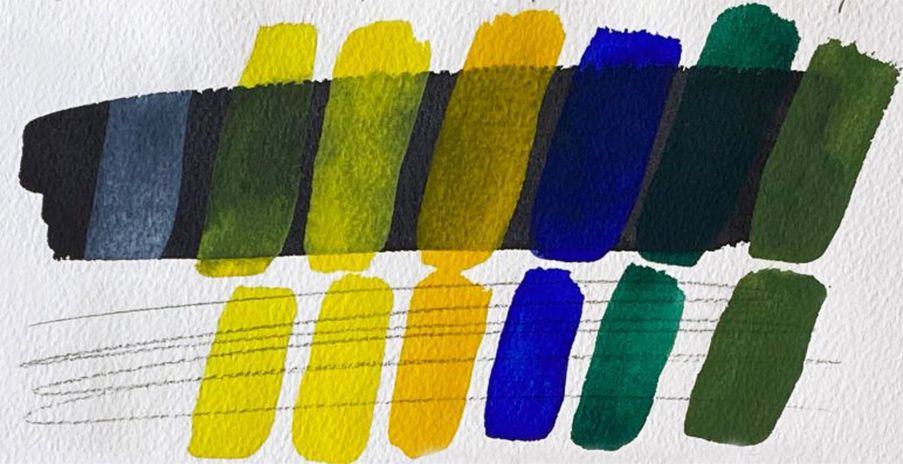
A sketch with a pencil line. (1 – Zinc white, (100), 2 – Lemon (214), 3 – Cadmium lemon(203), 4- Cadmium yellow medium (201), 5- Ultramarine (511), Emerald green (713), Chromium oxide (704).
The sketch is made in a dense layer. Pencil lines are clearly visible under the transparent and semi-transparent paints; they are worse visible or completely not visible under the opaque colours:

Transparent and semi-transparent paints add colour to the mixture, and opaque paints light the tone of the mixture. Light opaque paints, such as Сadmium lemon , will light dark mixtures:

Left – Lemon (214), Right – Cadmium lemon(203)